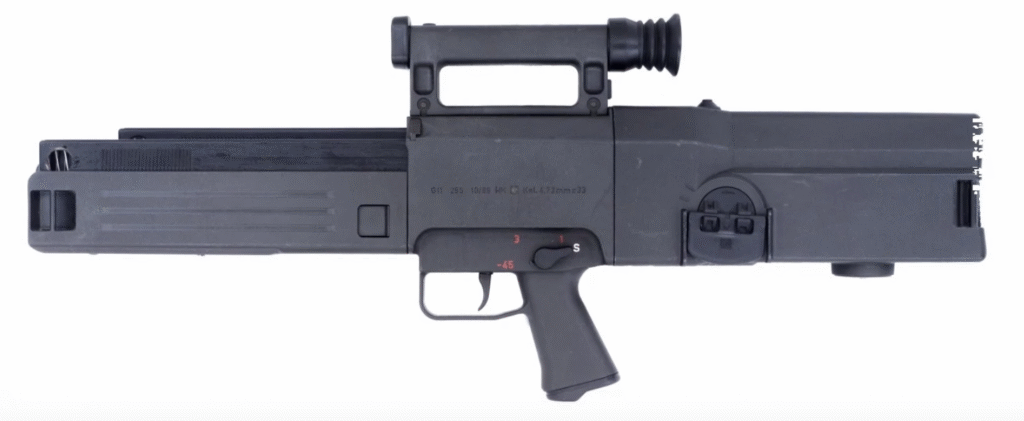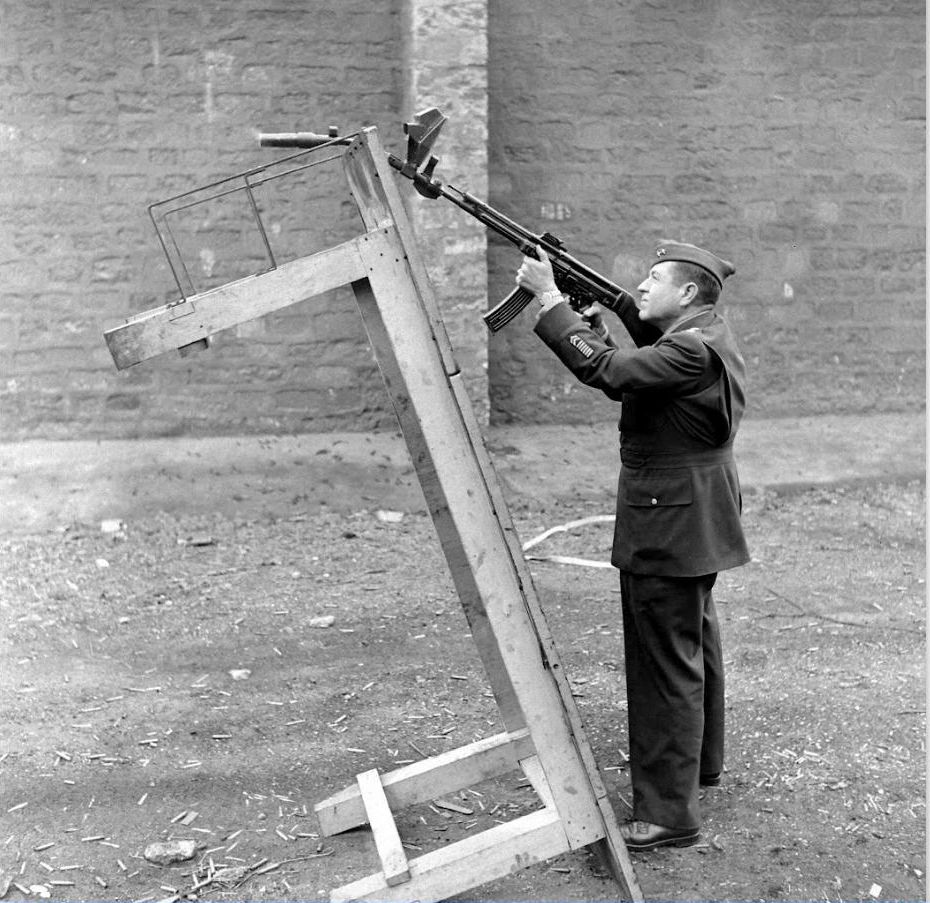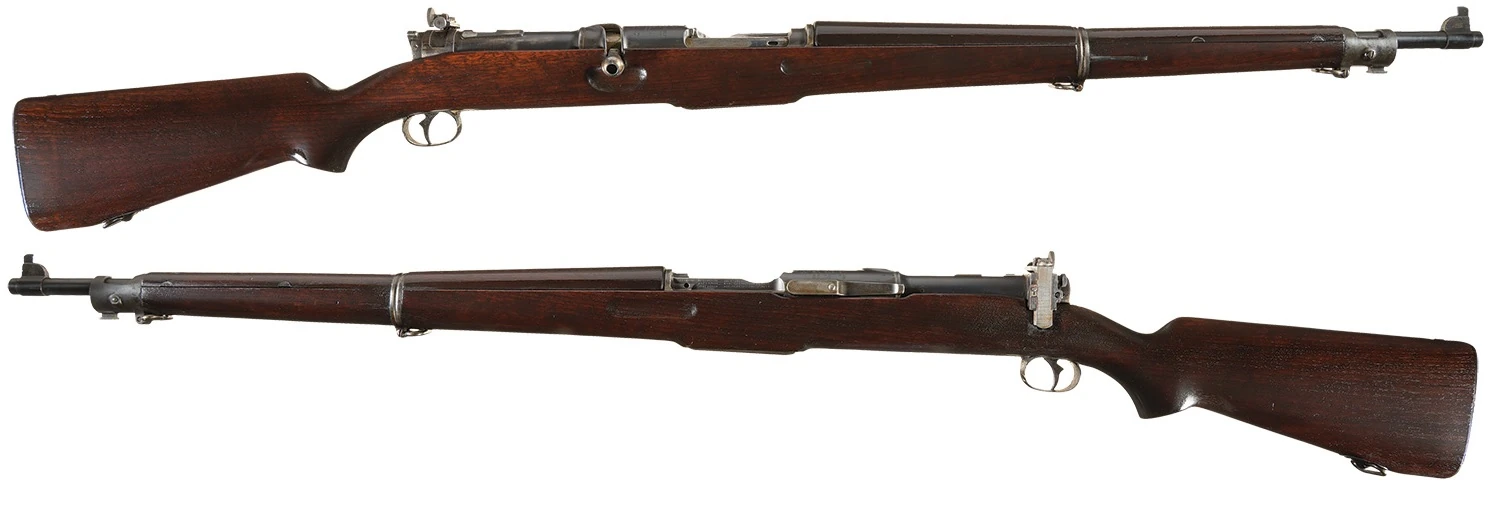As the resident weird gun enthusiast, I have this catalog of firearms that I mentally keep. Weird, often ineffective weapons get filed away, slowly replacing algebra, phone numbers, and how long ago I borrowed my neighbor’s leaf blower. Some of those get put into subcategories, like today’s article, which is going to focus on the 5 wildest experimental military weapons.
Thank you for reading this post, don't forget to follow and signup for notifications!
- The GyroJet Pistol
- The HK G11
- The Krummlauf
- Thompson Autorifle Model 1929
- The Davy Crockett Nuclear Weapon System
- Getting Wild and Experimental
The whole GyroJet series could fill this slot, but as far as I can tell, the GyroJet pistol is the only one the military ever tested. The GyroJet series fired projectiles that were micro-jet, which was a bullet that housed a rocket motor. The experimental bullet even had small, angled vents to spin the projectile for stability.

Advertisement — Continue Reading Below
The MACV-SOG guys brought the GyroJet pistol to Vietnam and tested it. The testing seemed to consist of shooting stuff and seeing what happens. They shot the rockets through sandbags, truck doors, and water-filled drums. They were ambassadors of shooting trash.
The problem with the GyroJet pistol was that the projectiles started slowly and accelerated over a distance. So at short range, they were useless. Handguns are short-range guns. It didn’t work all that well. Also, it wasn’t reliable, and for war, that matters a lot.
The Heckler & Koch G11 is a gun nerd’s wet dream. It was supposed to be the weapon of the future. The G11 used caseless ammo, fed from a top-mounted magazine, and used an uber-complicated mechanism to feed the ammo through the gun. That ammo was caseless. It was a block of explosive that held a small projectile and promised to be lighter.
Advertisement — Continue Reading Below

The G11 was shown heavily to the U.S. Military and the Bundeswehr. It was tested, refined, and tested again. The G11 had a three-round burst with a fire rate of 2,000 rounds per minute. The purpose was to shoot those three rounds before the gun was carried off target.
The main problem with the G11 was located in both the ammo and the gun. The ammo wasn’t all that well-suited to deal with moisture. The gun was expensive and absurdly complicated. Neither works well for military forces. This made the experimental G11 DOA.
Advertisement — Continue Reading Below
Let’s stick with Germany and travel back to World War II. Urban fighting was new, and this new assault rifle was called the StG 44. The Germans had issues, namely, they wanted to shoot around corners and out of tanks without being exposed. How do you do that? Some German engineer suggested they bend the barrel, and someone agreed.

They created bent-barrel experimental StG 44s called the Krummlauf. The barrel was bent at 30, 45, 60, and 90 degrees. Only the 30-degree model was produced in any great numbers. A periscope device was mounted to aim the thing.
Advertisement — Continue Reading Below
Barrel life was between 150 and 300 rounds. Testing by the U.S. Army would also cause it to break and fragment, making it the world’s smallest bore select-fire shotgun. It was a mess, but America gave it a try with a similar experimental M3 SMG.
Since we are in the past, let’s stay there and examine one of the early contenders for the M1 Garand contract. This came from John T. Thompson, designer of the Thompson SMG. The rifle used the Blish Concept, which made it a delayed blowback gun in theory. There is some debate about whether this system actually worked to delay anything.

Advertisement — Continue Reading Below
The Autorifle was produced in .30-06, 7.62×54, .303 British, and .276 Pedersen. The .276 Pedersen variant was used in the M1 rifle trials. The rifle stood out with a detachable magazine that held up to 20 rounds and used BAR mags. It was also very simple since it didn’t require a gas system to operate.
The downside was that the rifle required the ammo to be lubricated. Additionally, the Blish Lock might not have really done anything, resulting in increased recoil compared to the other rifles. The Autorifle bounced around to BSA, but ultimately went nowhere.
Okay, so this weapon moved past experimental and was issued within the U.S. Army, but it’s so wild I had to mention it. The Davy Crockett was a man-portable nuclear recoilless rifle. Yep, a manpad nuke. In the nuclear era, this thing was seen as the ultimate weapon to stop those Russian tanks from crossing the Fulda Gap.
Advertisement — Continue Reading Below
The system could be mounted on a Jeep or fired by tripod. It fired the M-338 nuclear round, which is the smallest nuclear weapon ever built. Its purpose was for front-line troops to stop Russian tanks with absolute ease. It had a range of a little over a mile, and soldiers had to train with non-nuclear training rounds because they would die if they used real nukes.

The nuclear fallout and radiation poisoning ensured that the team that fired it would also likely die. That’s a big downside, but it was also a political non-starter. What if Private Snuffy launched a nuke?
That could start a world-ending nuclear war because Private Snuffy ND’d the Davy Crockett. One can only hope their name would somehow get attached to a man-portable nuclear weapon. That’s unlikely to happen again, so Davy Crockett might be the only man to have that honor.
Experimental doesn’t always mean bad. That’s how we get massive gains in technology and weapons. However, when they get wild, they can almost always be doomed to failure. Most of the time. Whether it’s a nuclear mortar or a pistol that fires slow-moving rockets, these experimental marvels serve as a necessary reminder: every great leap in firearms technology started with someone being just a little too wild for their own good.



